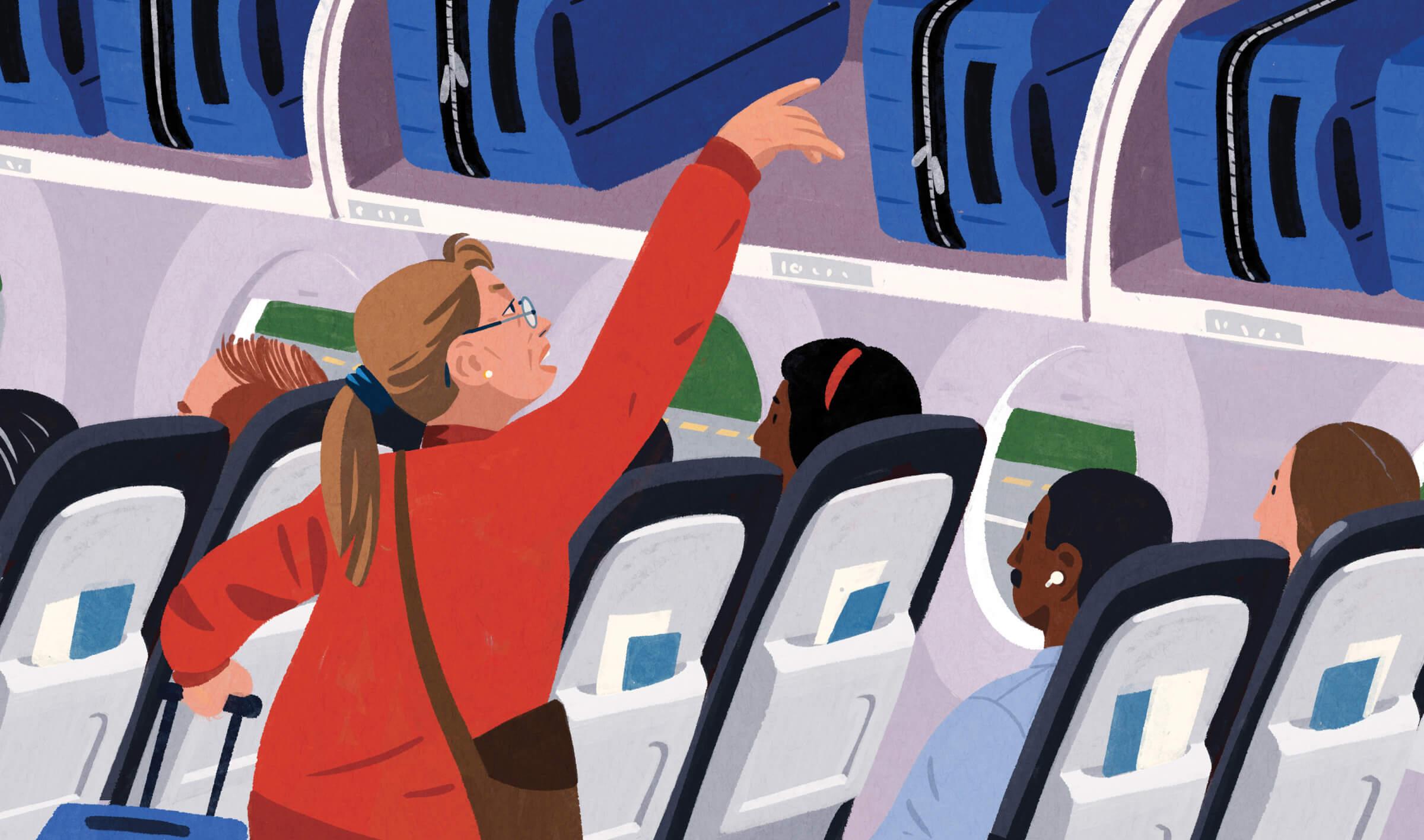Your Life
I FLEW TO PORTUGAL. MY MEDICAL DEVICE FLEW TO CANADA
One simple step would have prevented restless nights
BY HANNELE RUBIN

I unzipped my bag and screamed. “What’s wrong?” my husband yelled from across our vacation rental in Lisbon, Portugal. “This isn’t my machine,” I cried. “The trip is ruined!”
Here we were on a family vacation, and I had someone else’s CPAP, or continuous positive air pressure machine. These devices are prescribed to treat sleep apnea, a breathing disorder. An estimated 8 million Americans use one, and settings are customized for each patient. Without my device, I was facing two weeks of restless nights instead of a relaxing excursion. How did this happen? Looking back, it was an accident waiting to happen.
A CASE OF CONFUSION
Airline passengers are advised to bring portable medical devices as carry-ons, rather than in checked baggage, where they may be damaged or lost. By law, qualifying devices—such as CPAPs, portable oxygen concentrators and dialysis machines—don’t count against a passenger’s carry-on allowance.
But on our crowded first flight, from Texas to Newark, New Jersey, the bins above my seat were full. So my husband wedged my gray CPAP case into a bin a few rows in front of us. Curiously, after landing at this layover, it was in a bin several rows behind us. “That’s strange,” I said. “Maybe the flight attendants moved things around.” My husband grabbed it, and we caught the flight to Lisbon.
WHERE’S MY MACHINE?
Upon realizing the mix-up—another passenger must have taken my machine—I became a student of lost-luggage policies. Unlike checked bags, airlines don’t give claim tickets for carry-ons, and they aren’t responsible for such items, if damaged or lost.
I turned in the mystery traveler’s device (no contact info on or in the case) to the Lisbon airport’s lost and found and filed my own missing carry-on reports.
That same day, I received an email from the airline saying the mystery traveler had returned my CPAP to the airport ... in Ottawa, Canada. A cabin crew would take it to Dulles International Airport near Washington, D.C., then pass it to another crew bound for Lisbon.
That night was torturous. Without my CPAP, my airways narrow or close as I sleep. I may snore or stop breathing. This can happen a few times every hour. My body rouses itself enough to gasp for air and start breathing again. But it was only one night. I thought.
The next morning, the CPAP didn’t arrive. I began contacting customer service multiple times a day. This meant hours talking on the phone, waiting on hold, leaving voicemails or sending emails or texts. I eventually got to someone who located my CPAP at the lost and found at Dulles. I was given three options: pick it up in D.C., pay to have it shipped to my home in Texas, or pay (a prohibitive amount) to have it sent to Portugal. “But it wasn’t my fault,” I said. “It’s a medical device. I need it!”
I CAN BREATHE AGAIN
I considered scrapping the rest of my trip, but instead I made one last-ditch attempt to get it to Portugal: I googled my airline’s corporate officers and sent my sad story to every executive for whom I could find an email address.
Two days later—a week into my vacation—my CPAP arrived in Lisbon. It was a “goodwill gesture,” an airline representative later said.
Back in Texas, I took a simple step to prevent future mix-ups—placing my contact information inside and using markers to doodle sparkly stars, squiggles and swirls on the case. No one will mistake it for theirs. I hope.
Hannele Rubin, an avid traveler, has written for the New York Post and several corporate publications. She taught journalism at Texas A&M University.
Tips for Traveling With a Medical Device
Some ways to avoid damage or loss:
▶︎ Take a photo of your device and its travel bag, says Christopher Elliott, a Seattle-based travel expert and consumer advocate. If it gets lost, you can show airline officials what it looks like.
▶︎ Ask the airline several days before departure about any special requirements. Your device must be Federal Aviation Administration-approved, and if you need to use it in flight, most airlines want you to let them know about it 48 hours in advance.
▶︎ Don’t put the device in checked baggage, Elliott says. It’s safer with you.
▶︎ Place your prescription inside the case, advises the Transportation Security Administration. You may need it to prove the device is exempt from carry-on limits.
▶︎ Attach your contact information, and personalize your travel case.
RYAN JOHNSON